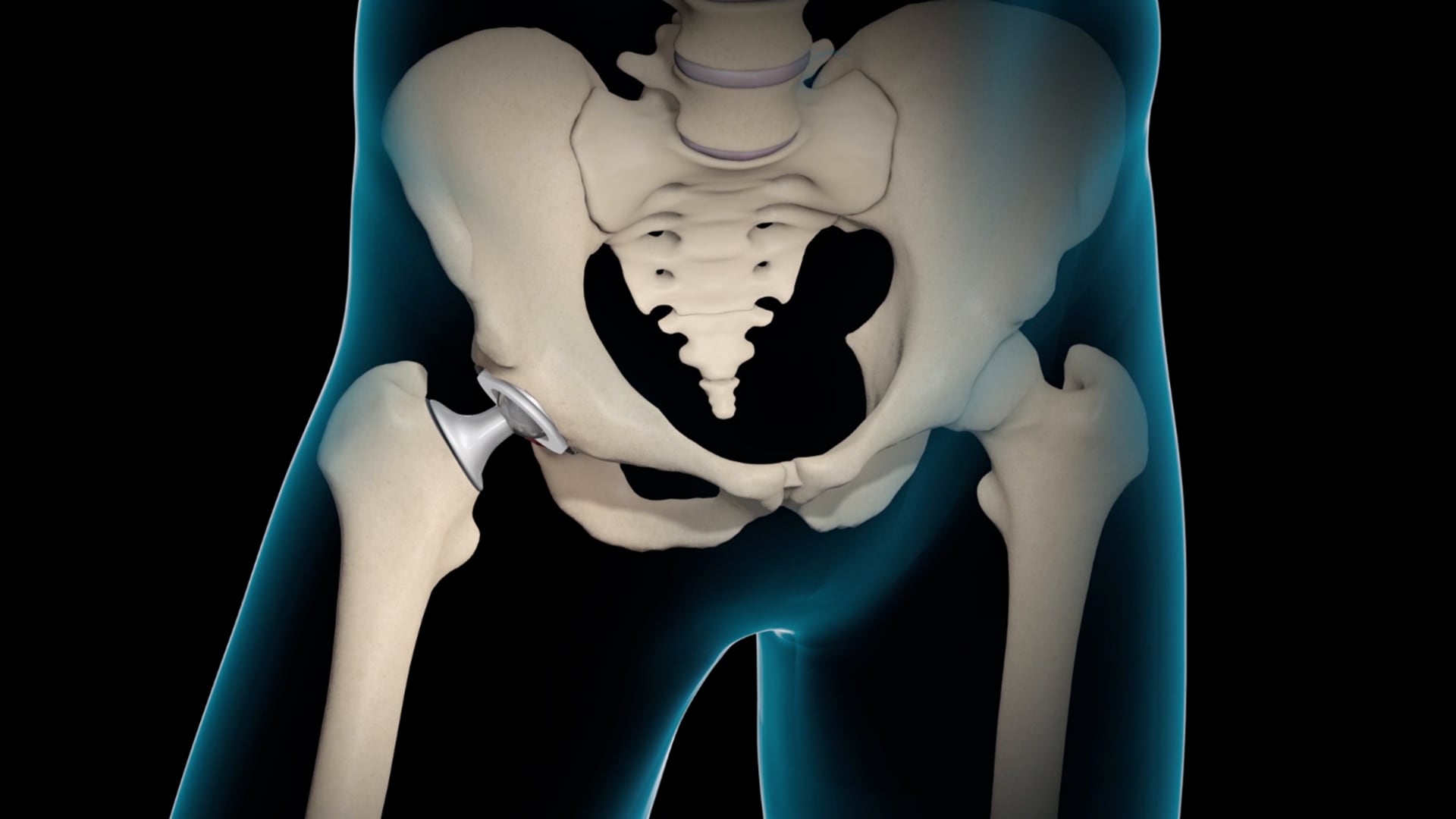Results
Between 80 and 90% of patients are satisfied with their hip replacement surgery and 90% of the prostheses last for at least 15 years. Most patients experience better hip function, improved mobility and good pain relief after their recovery. Most also report a significant improvement in their quality of life at 6 months following surgery.
After recovery, you can enjoy low-impact activities, such as jogging, swimming, golfing or biking. Higher impact activities such as sprinting, contact sports or jumping should be restricted and discussed with your surgeon.

Risks
Most hip replacement surgeries are problem-free but about 1 patient in 10 may have complications. Most can be successfully treated, although sometimes further surgery is needed. Complication rates vary between countries, hospitals and surgeons. The most frequently encountered complications are:
- Infection. The risk of infection is very low as an antibiotic is given before and after surgery. Most common are skin and soft tissue infections, which may only require antibiotics. Approximately 1% of patients develop an infection that extends to the prosthesis and this almost always leads to repeat surgery. To learn more about signs of infection go to Caring for your hip.
- Blood clots. Clots may develop within the veins of your calf following hip replacement surgery. This is known as deep vein thrombosis (DVT) and occurs in about 1% of cases. Rarely, the clots may travel from your veins to your lungs and cause pulmonary embolism, which can be fatal. To prevent this, your surgeon may prescribe oral medications or injections after the surgery for a period of time. Smoking and obesity increase the risks of DVT and pulmonary embolism.
- Dislocation. The risk of dislocation is 1–3% and varies according to the surgical approach used.
- Blood loss. Blood is inevitably lost during surgery and in some cases, a blood transfusion may be needed. If you’re taking blood-thinning drugs, you may be asked to stop them before surgery.
- Injury to nerves or blood vessels. This is a rare but serious complication and a vascular surgeon may need to repair them. The sciatic nerve, which controls the foot and calf muscles, runs behind the hip. Injury to the nerve may cause numbness and weakness of the foot. In most cases, the nerve recovers after a few months but sometimes additional procedures are needed.
- Breaking of the bone around the prosthesis. This is known as a ‘periprosthetic fracture’. It usually happens as a result of a fall or direct trauma to the hip but can also occur during the surgery. Periprosthetic fractures can be fixed with additional prostheses and screws but if the original prosthesis is loose, it’s replaced with a longer and larger prosthesis.
- Loosening or prosthesis failure. These are long-term complications that occur due to wear and tear of the prosthesis. If it becomes loose or wears out after years of use, it’ll need to be replaced. Being overweight can increase wear and tear on the prosthesis and reduce its lifespan.
- Leg length discrepancy. The operated leg may be longer or shorter after surgery. In some cases, the leg is deliberately left short to prevent stretching of the nerves and blood vessels. Most patients don’t notice the difference if the discrepancy is less than 1cm. Leg length discrepancy occurs in 6–32% of patients.
Ask your surgeon about the results and risks associated with your surgery. Also ask about their own rates of patient satisfaction and the rate of complications following the surgeries they’ve performed.